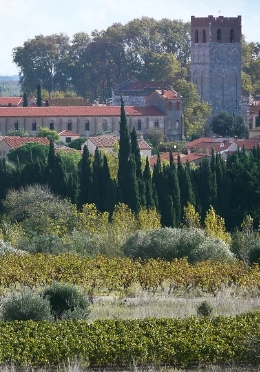
The 36 Communes
City of Baixas
The village is located about 10 km northwest of the centre of Perpignan. With 5 entrance gates, 9 watchtowers and a "Cellera", this village, one of the oldest in Roussillon (10th century), has preserved its medieval identity. The vineyards with their noble grape varieties reign supreme and have greatly contributed to the reputation of this region.
The area of the commune is 1,891 hectares and its altitude varies between 51 and 312 metres.
The story
The Cova de l'Amaga la Dona cave, located to the northwest of the municipality and discovered in 1976, reveals remains from the Copper Age, dated to 1800 BC. In the 10th century, a Gallo-Roman villa called Baissare (the low place) is mentioned. In 925 the village was surrounded by a small fortification and the Romanesque church dedicated to Saint Stephen. In the 12th century, the original church was replaced by another, of the Romanesque type, rebuilt in the 14th century and enlarged over time. In 1672, it was given a 17-metre high altarpiece, entirely gilded with fine gold in 1698, which is now considered a major work of Baroque art. Subsequently, the history of the village is linked to stone and vine. The marble of Baixas was exploited very early on for its high quality, and adorns many monuments, from the Palace of the Kings of Majorca in Perpignan to the Sanctuary of the Immaculate Conception in Washington.
Baixanencs
Number of inhabitants
The town of Baixas has approximately 2,633 inhabitants in the year 2021. Its inhabitants are called Baixanencs.

Dynamic village, land of vineyards and history,
Since 1956, the vines have been classified as AOC (Appellation d'Origine Contrôlée), producing in particular Muscat de Rivesaltes, Côtes du Roussillon and Côtes du Roussillon villages.
These lands are a cultural and tourist stopover of choice. Baixanencques and Baixanencs will be happy to welcome you.





